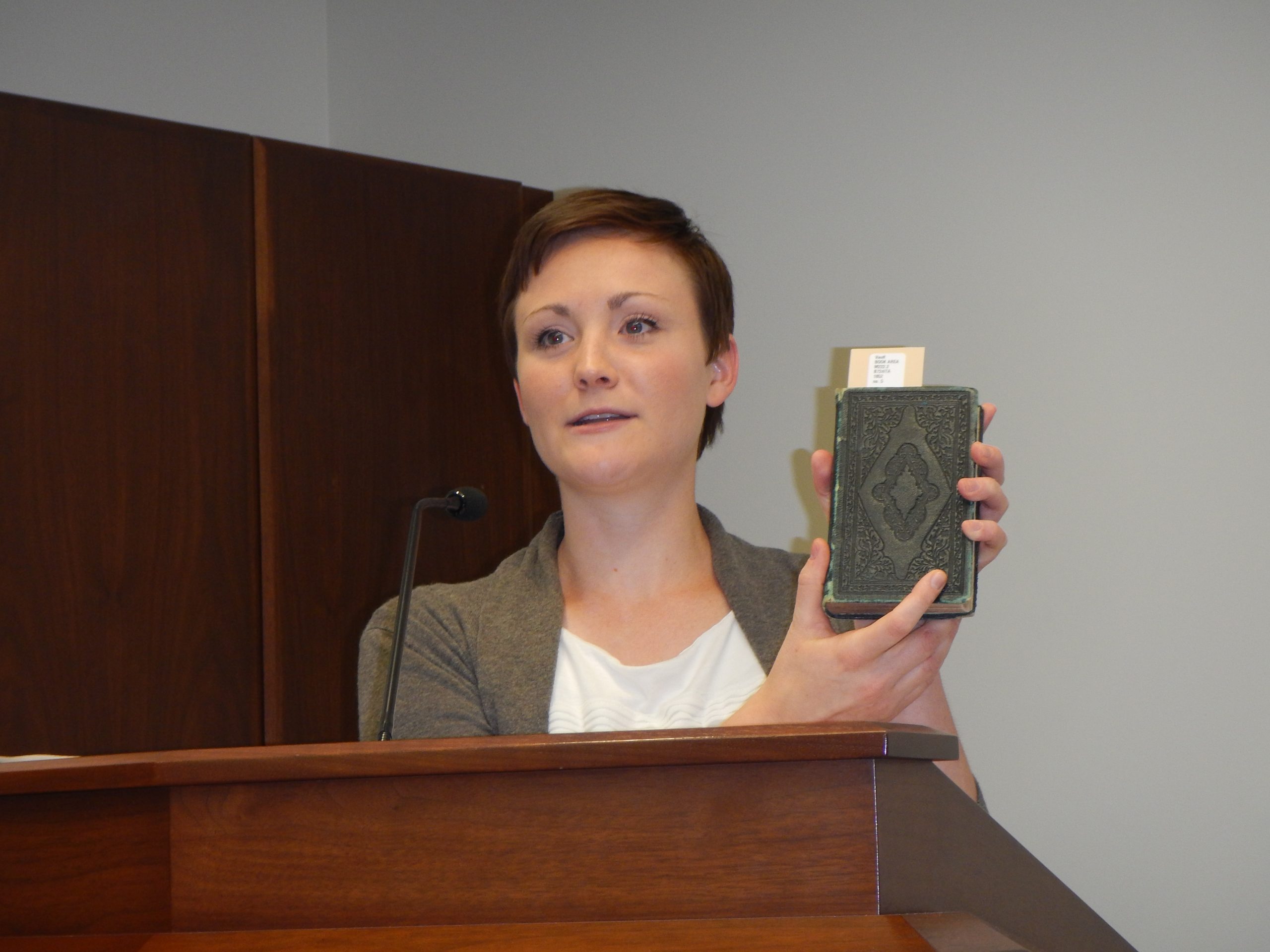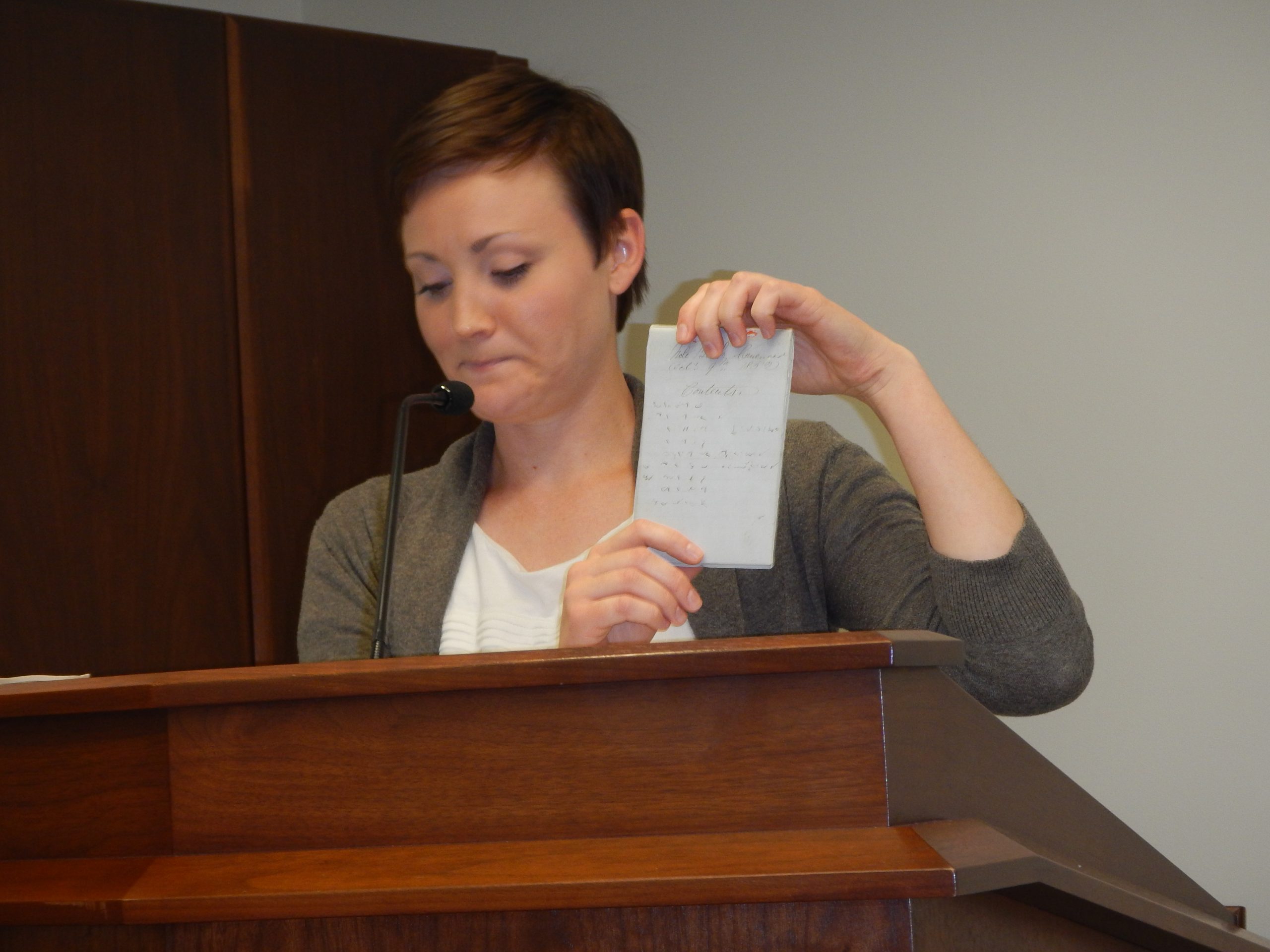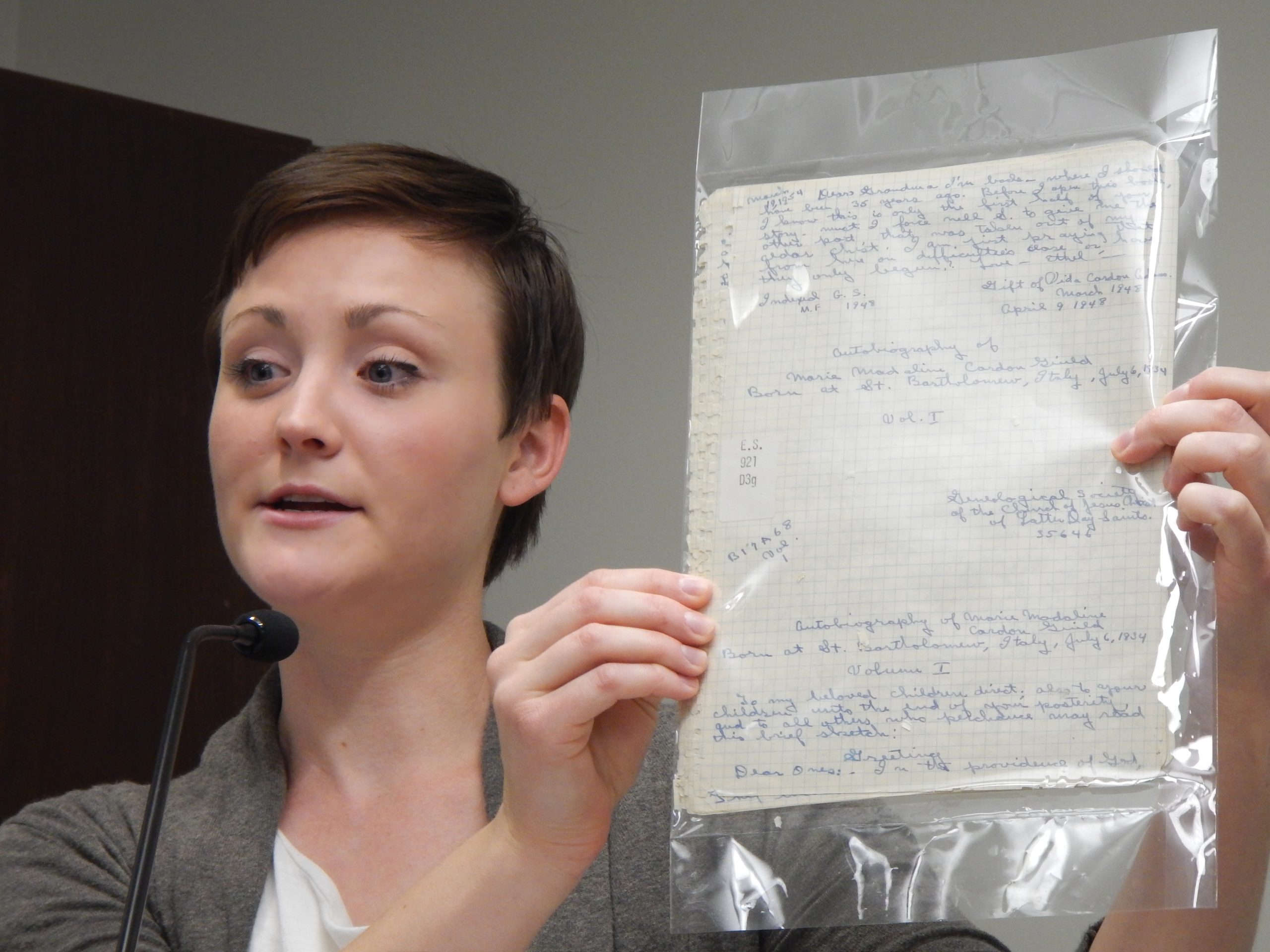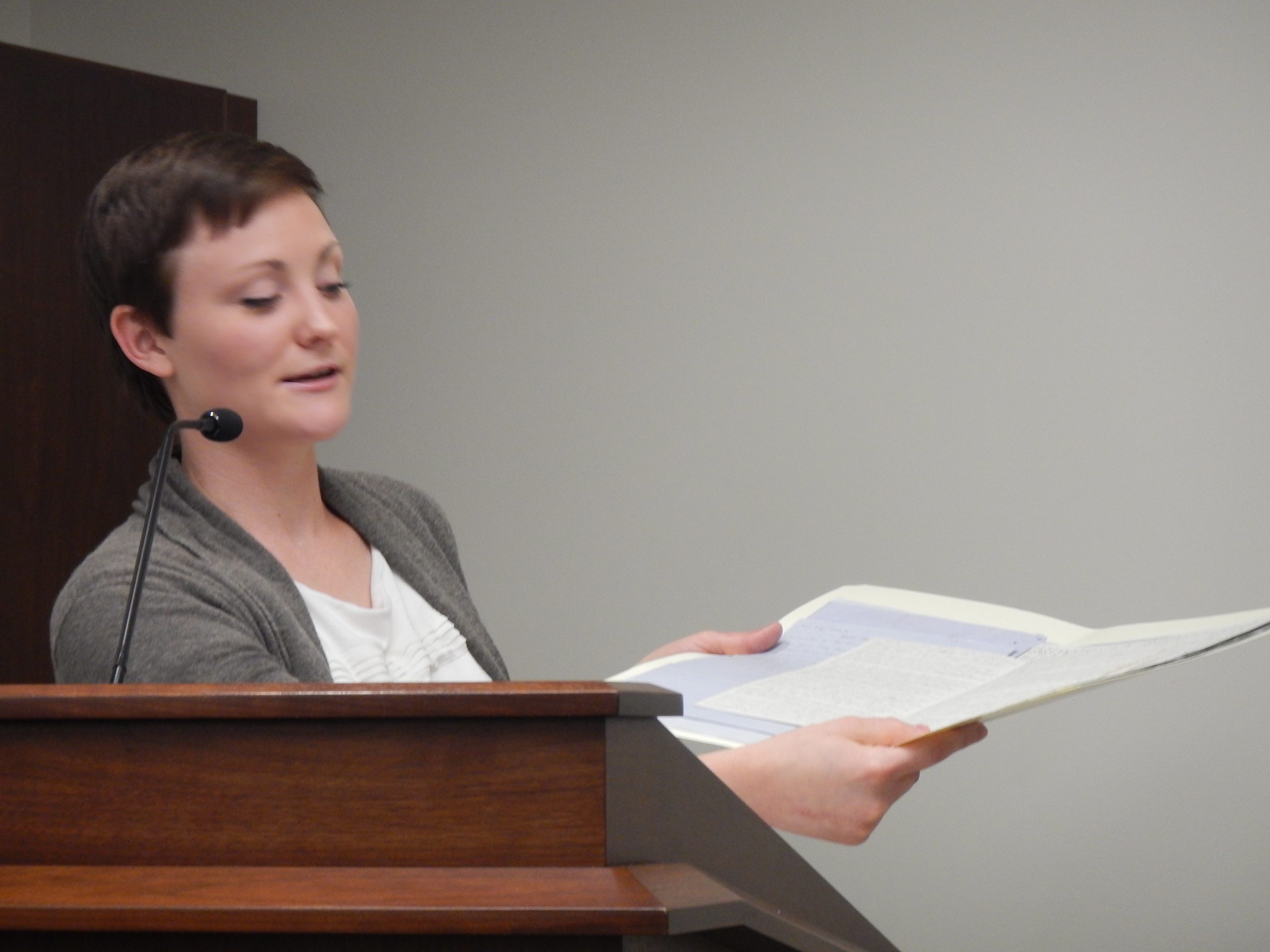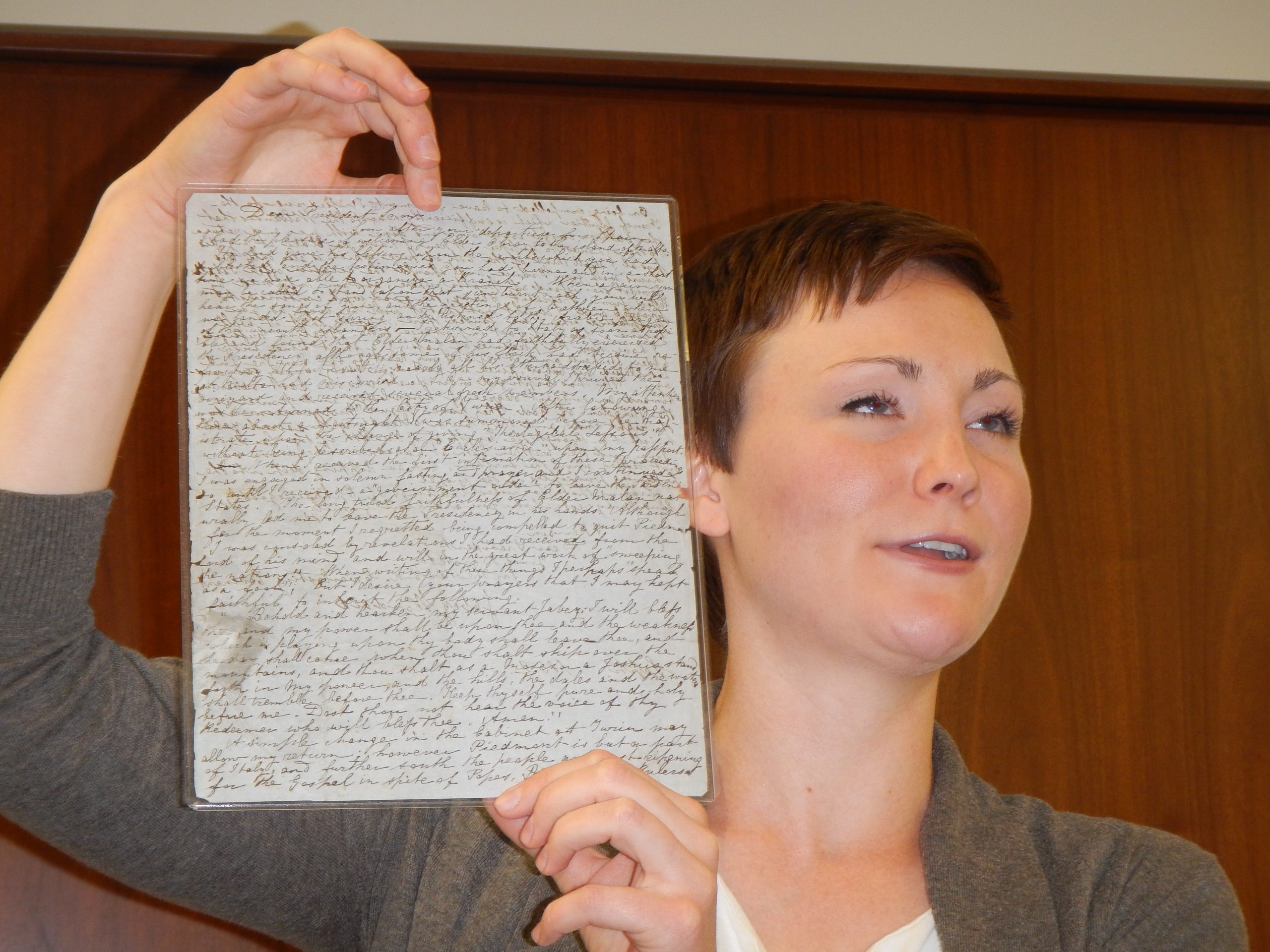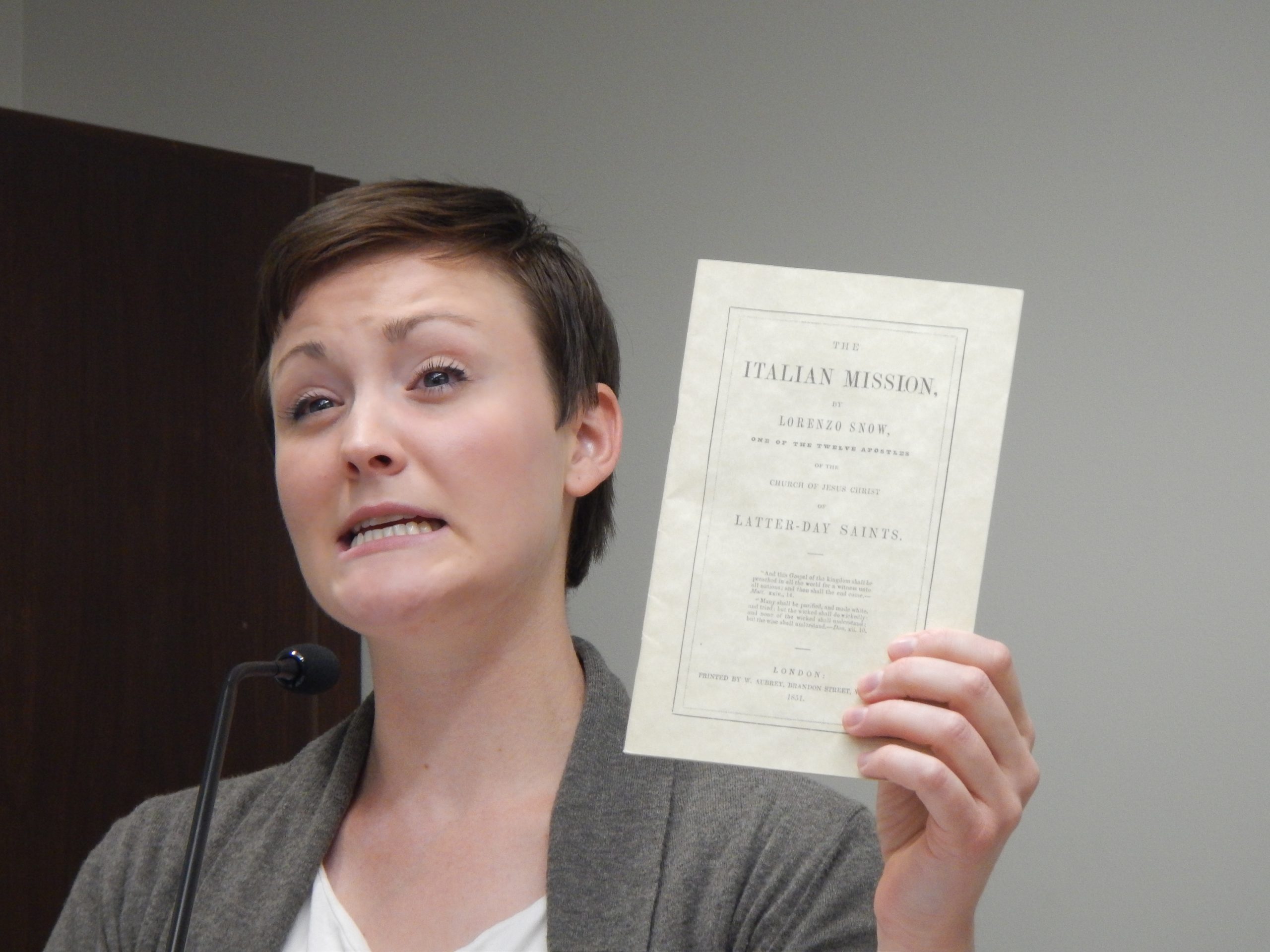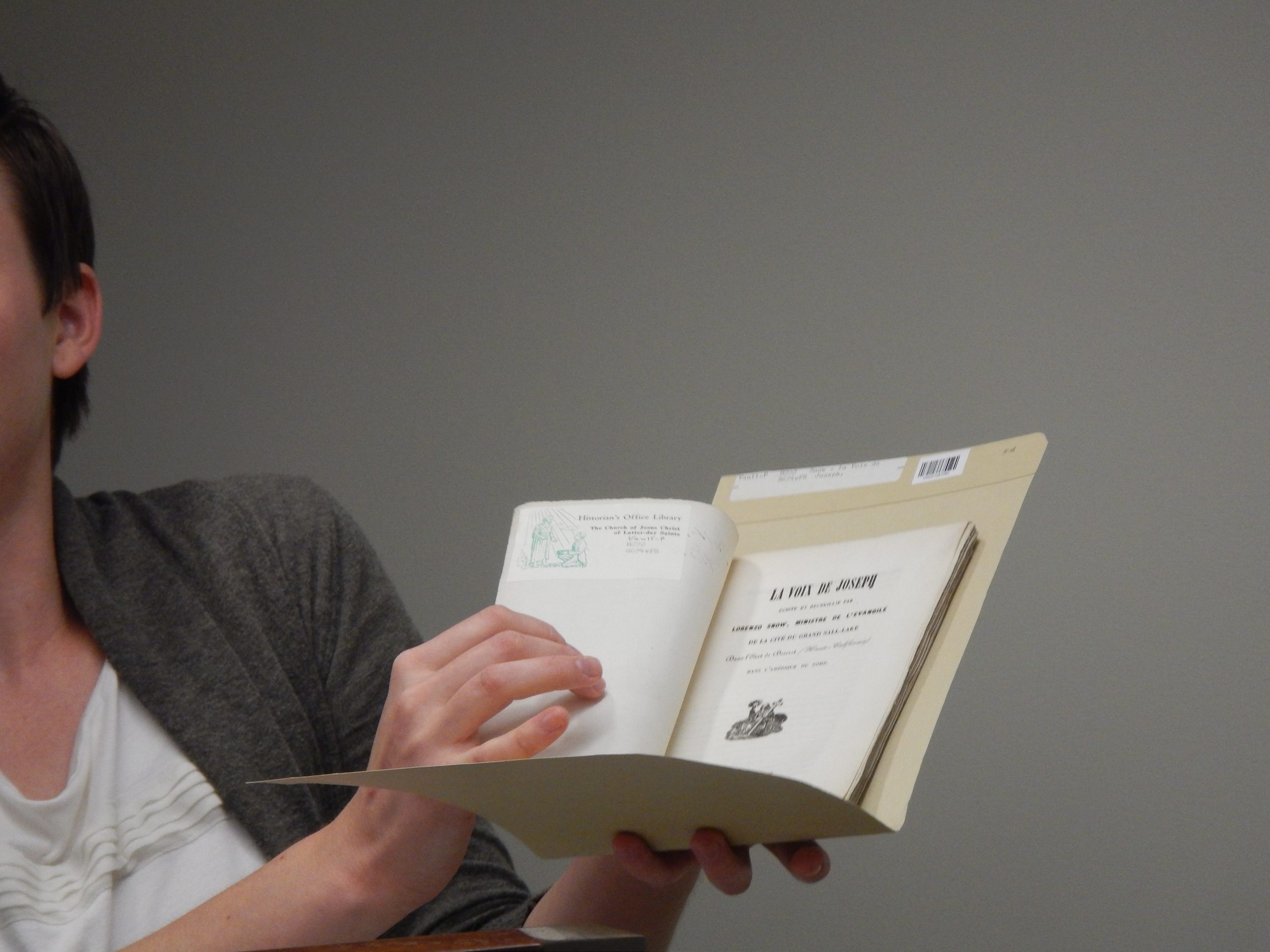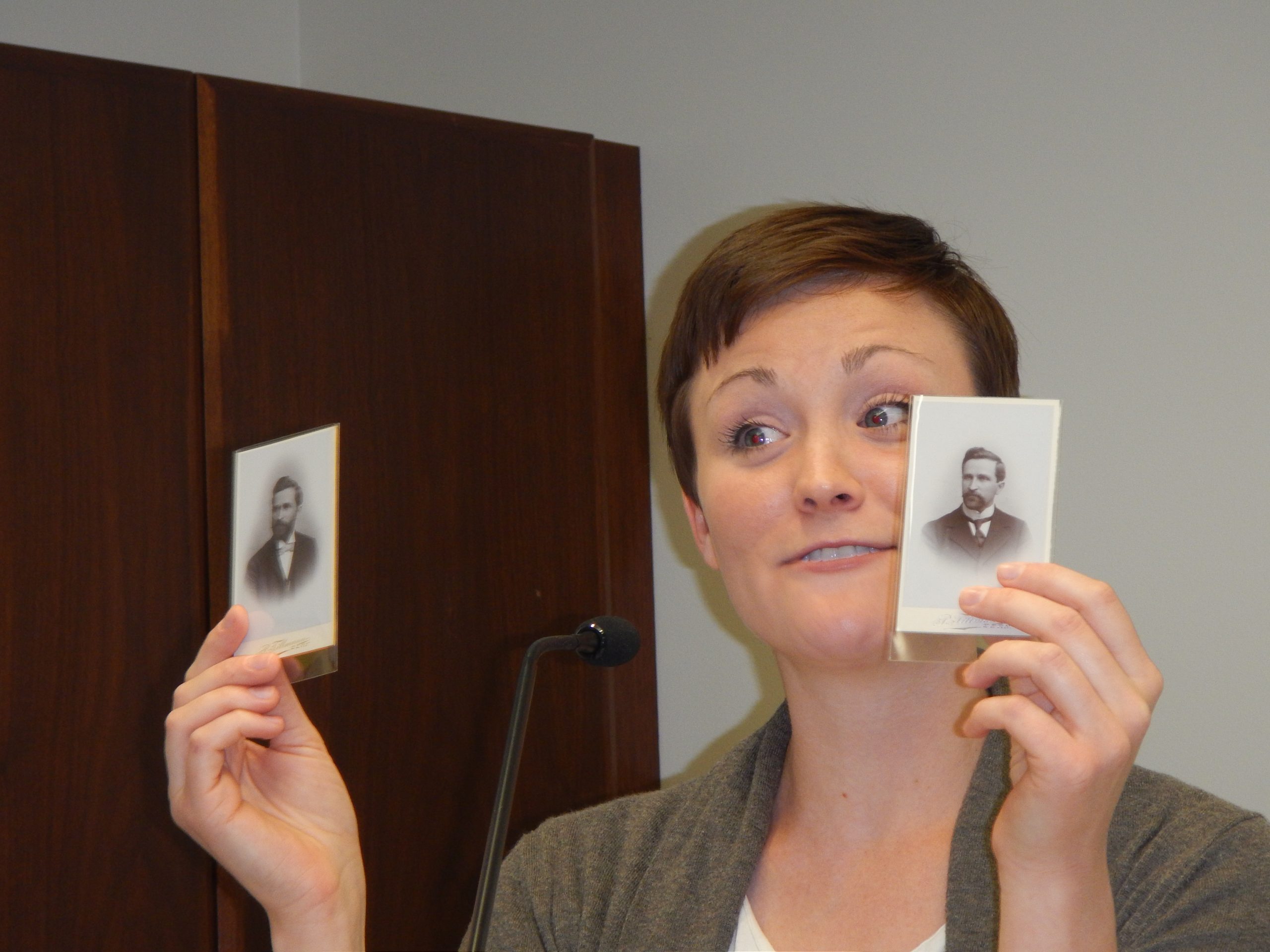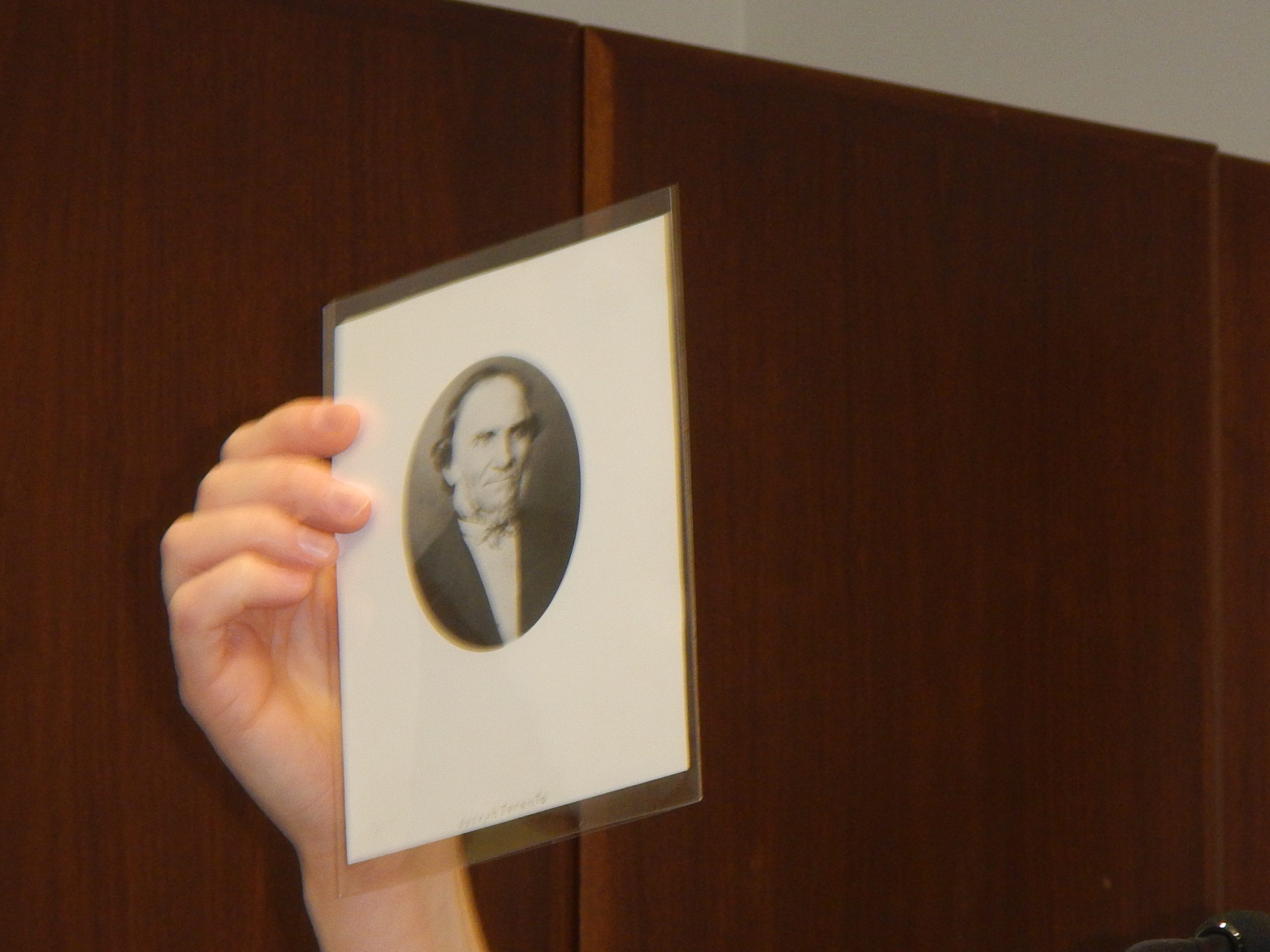By Craig A. Cardon
Appendix A
Appendix B
Addendum
Elder Lorenzo Snow “was called on a special mission to Italy, with discretionary power to labor elsewhere if circumstances should so justify and his judgment and the good Spirit should direct”1at a semi-annual conference of the Church on October 6, 1849. “Joseph Toronto, a native of Sicily, was appointed to accompany him….”2 Along with other missionaries called at the same conference, they left Salt Lake City around October 19, 1849, arriving in Council Bluffs, Iowa on December 10, 1849. They later arrived in New York and departed on the ship “Shannon” on March 25, 1850, arriving in Liverpool, England on April 18, 1850.3 In England, Elder Snow selected Thomas B. H. Stenhouse from among the English brethren to join in the mission to Italy. On June 16, 1850, these three sailed from Southampton, England aboard the steamboat “Wonder” for Havre, France. They continued their journey overland from Antibes, to Nice. From Nice they traveled by “Diligence” along the shores of the Mediterranean Sea to Genoa, where they arrived on June 23, 1850. Under the direction of Elder Snow, Stenhouse and Toronto journeyed to “Les Vallees Vaudoises” on July 1, 1850.4 After receiving a letter from Stenhouse and Toronto, Elder Snow wrote:
I have felt intense desire to know the state of that province to which I had given them an appointment, as I felt assured it would be the field of my mission. Now with a heart full of gratitude, I find an opening is presented in the valleys of the Piedmont, and all other parts of Italy is closed against our efforts. I believe that the Lord has there hidden up a people amid the Alpine Mountains, and it is the voice of the Spirit that I shall commence something of importance in that part of this dark nation. (Autobiography of Lorenzo Snow, pp. 120-121.)5
Elder Snow left Genoa for the Piedmont on July 23, 1850.6 He later reported that at that time there were approximately 21,000 Protestants and 5,000 Catholics in the Valleys. Elder Toronto left to visit his native Sicily during the beginning of August 1850. Learning of a three-year-old boy, Joseph Grey, who was close to death, Elders Snow and Stenhouse fasted on September 7, 1850. They went to the mountains to pray that day and returned to the Grey home at about 3:00 pm where they consecrated some olive oil and anointed the child. They left and returned a few hours later to learn that the boy was healed.7
Considering the circumstances more favorable, Elder Snow sent for Elder Jabez Woodard of London who joined them in the Valleys on September 18, 1850. On September 19, 1850, Elders, Snow, Stenhouse, and Woodard ascended Mount Vandelino and took a position on a bold projecting rock, Mount Castelluccio, overlooking the town of Torre Pellice, where they dedicated the land of Italy to the preaching of the gospel.8 They then organized officially the Church in Italy with four members, Elder Snow of the Quorum of the Twelve, Elder Toronto of the Quorum of the Seventies, and Elders Stenhouse and Woodard. Elder Snow proposed that “this mountain be known among the people of God, henceforth and forever, as Mount Brigham, and the rock upon which they stood—the Rock of Prophecy.”9
On October 27, 1850, J. A. Bose was baptized the first convert to the Church in Italy in this dispensation. He was ordained an Elder by Lorenzo Snow on January 25, 185110 and was later excommunicated (date unknown).
On November 24, 1850, Elder Snow ordained Jabez Woodard a high priest and called him to preside over the Church in Italy. He also ordained Thomas B. H. Stenhouse a high priest and appointed him to open the door of the Gospel to the people of Switzerland. These ordinations occurred on “Mount Brigham.”11
Elder Snow left Italy at the end of January or the first of February 1851, after having ordained Jean Antoine Bose an elder in D’Angrogna, Piedmont as noted above. He subsequently wrote a letter from Geneva, Switzerland on February 6, 1851.12 One of the principle reasons for his leaving Italy was to accomplish in London the translation and publishing of the Book of Mormon in Italian. In a letter dated January 25, 1851, Elder Snow told Orson Hyde that Stenhouse left for Switzerland a “few days”13 after his ordination to the office of high priest on November 24, 1850. This left Woodard in the Valleys with Toronto still in Sicily.
On February 24 and 25, 1851, many members of the Malan family were baptized along with two members of the Combe family.14 On March 17, 1851, Barthelemy Pons was baptized, followed by the baptism of other Pons family members on July 24, 1851. Individuals from the Justet, Volat, and Gras families were baptized on April 17, 1851. Members of the Beus family were baptized on August 14, 1851.
The Record of the Italian Mission, page 7, Catalogue No. 1338 indicates that Philippe Cardon and his wife, Marie, were baptized on January 2, 1852 with other family members being baptized later that year in October and November. Strictly according to this record, Philippe would have been the 28th person baptized in the area.
It should be noted here that the mission record printed in the appendix of The Scriptural Allegory (Record of the Italian Mission, Catalogue No. 1338), is the same as the mission record mentioned by Marie Madeleine in her autobiography and referenced later in this narrative (Italian Mission Records, file No. 160244, found in Salt Lake City). A spot check between the two documents revealed no inaccuracies in the printed version. The information found in both of these documents is organized by branch unit (Angrogne, St. Germain, St. Bartholomew, and Prarustin) along with a separate listing of some Officers of the Priesthood. Ordinances are not recorded chronologically. Some entries made further down the lists give ordinance dates two years prior to entries found above them. This would suggest that the available records are not “original” records and may have been compiled by using individual memories or other records currently unavailable. If so, the possibility of inaccuracies in the available records is heightened.
Some confusion arises, for example, from the fact that the mission record indicates that Philippe Cardon was ordained a priest on October 5, 1851. (The record also indicates that he was ordained an elder on September 1, 1853.) The record shows that for others, priesthood ordinations occurred on the same day as baptism (J. Dl. Malan, Sr. baptized and ordained a priest on February 25, 1851), several days following baptism (Bartholomew Pons baptized March 17, 1851 and ordained a priest on March 28, 1851), or a few months following baptism (John Antoine Bose baptized October 27, 1850 and ordained an elder on January 25, 1851). This leads to questions like the following: Is the 1851 priest ordination date wrong? Was Philippe baptized on the same date he was ordained a priest, or was he ordained several days, weeks, or months following his baptism? Was Philippe’s baptism on January 2, 1852 a rebaptism as was sometimes practiced in the early days of the Church (although, nothing in the record would suggest this)? While these and other questions may not find ready answers in the available records, even if we assume a baptismal date several weeks prior to the recorded date of Philippe’s ordination as a priest (say September 1851), it appears that the otherwise known sequencing of baptisms in the area would not have been affected significantly.
It is helpful to note that in a letter dated May 9, 1851, Elder Woodard, then in Italy, communicated to Elder Snow, then in England, that following a recent baptism, there were “21 members, exclusive of those who are non-resident”15 in the area (none of whom were Cardons). This is the exact number the mission record indicates were baptized prior to the Beus baptisms in August 1851.
In a letter dated August 1, 1851, Elder Snow, still in London, told Franklin D. Richards in Liverpool that Elder Stenhouse was leaving London that week with his wife and daughter to return to Switzerland. He also indicated that at that time, Elder Toronto had already by then returned from Sicily to “La Vallee Vaudoise.”16 In a Millennial Star article dated August 15, 1851,17 Elder Snow mentions only Elders Woodard and Toronto in describing missionary efforts in the Valleys, and then adds, “Several intelligent and influential Italians have lately been ordained to the priesthood, and are now engaged in propagating the principles of life and salvation.”18 Elder Snow himself returned to Italy from England via Switzerland in February 1852.19
So, when did the Cardon family first encounter the missionaries? And who were the three men who visited the Cardon family in fulfillment of Maria Magdalena’s dream a decade earlier? Given the uncertainties created by the improbable order of the recorded baptismal and priesthood ordination dates, and since we have no way of knowing the length of time between the Cardon family first meeting the missionaries and eventually being baptized, we cannot know for sure the date of their first encountering the missionaries. However, Philippe Cardon’s daughter, Marie Madeleine states in her autobiographical history that upon hearing of three missionaries who were preaching the gospel in the nearby locale of Palais de la Tour (now Torre Pellice), her father traveled to find them and heard Elder Lorenzo Snow preach.20 According to Marie, Philippe then invited the three men to the Cardon home and the Cardon family was baptized “[n]ot long after the elders had brought unto us the message of truth,” Philippe being “the first man to join in that part of the country.”21 The narrative then makes a correcting statement indicating that according to mission records (film 160244 in Salt Lake City), John D. Malan was the first to be baptized and Philippe Cardon the second, he being baptized by Jabez Woodward (s/b Woodard). Actually, a search of the records found on film 160244 shows that J. D. Malan was baptized on February 24, 1851 and was a member of the Angrogne Branch, that Philippe Cardon was baptized on January 2, 1852 and was a member of the St. Bartholomew Branch, and that several others were baptized between these two dates and were members of the Angrogne and St. Germain branches. Nevertheless, if Marie’s information is correct as to Elder Snow, when correlated with the information available in Richards’ book, the Cardon family would have met the missionaries sometime between July 1850 and January 1851 (the dates when Elder Snow was in Italy). The three men would have been either Elders Snow, Stenhouse, and Toronto (July 1850), or Elders Snow, Stenhouse, and Woodard (September to November, 1850), probably the latter. If the Cardons were baptized shortly after meeting the missionaries and Philippe was baptized by Woodard as Marie indicates, the baptism could not have taken place prior to September 1850.
As noted earlier, it should be remembered that the Italian Mission Records indicate that J. A. Bose was the first person baptized on October 27, 1850, and that J. D. Malan was second on February 24, 1851, his family being baptized the next day. This would seem to indicate that when Marie states initially that the Cardon family was the first to be baptized in the area, she may have been referring to the smaller area of their home branch, St. Bartholomew.
Later in her account Marie speaks of the language capabilities of the three missionaries, noting that Elder Toronto spoke Italian, Elder Stenhouse, French, and Elder Woodward (Woodard), English.22 The naming of these three missionaries could possibly give rise to additional confusion as to who the three men were who visited the Cardon home, the assumption being that these were the three. However, according to the information available in Richards’ book, there was never a time when these three men were in the area at the same time (Elder Toronto departed for Sicily shortly after his arrival in Italy in July 1850 and did not return to the area until August 1851, Elder Stenhouse departed the area in November 1850 and never returned, and Elder Woodard did not arrive until September 1850). This would mean that the information in Richards’ book is either inaccurate or incomplete, or that, as is probably more likely, Marie’s account simply summarizes the language abilities of the three men without specifying that they were in the area at different times.
It should be remembered that Stenhouse left Italy shortly after being ordained a high priest on November 24, 1850 and there is no indication that he ever returned to Italy. Woodard was certainly in the area after September 1850, and as of August 1851 we know that Toronto was in the area. Elder Snow was in England after February 1851 and did not return to Italy until February 1852. Upon his return, he directed Elder Woodard to open a mission in Nice, France,23 and Elder Woodard probably left soon thereafter. Elder Snow then left Italy after being there for only a few days in February 1852.24 He arrived in Salt Lake City on July 30, 1852.25
Although Marie’s specific mention of Elder Snow as the one whom her father heard preach the gospel before inviting three men to their home carries the heavier weight in considering who the three men were, another possibility could be considered from the information provided in the mission records. As noted earlier, the records indicate that Philippe Cardon was ordained a priest by Elder J. D. Malan on October 5, 1851. Malan was undoubtedly one of the intelligent, influential Italians mentioned by Elder Snow as engaged in propagating the principles of life and salvation in August 1851. In fact, Elder Malan was acting as Branch President at the time of Elder Snow’s return to Italy.26 Although baptized earlier than the Cardons, the records indicate that James Volat was excommunicated on August 7, 1852, and Daniel Justet on August 26, 1855. Members of the Bose, Combe, and Gras families were also excommunicated, but no specific dates are given, thus leaving in doubt their status in the Church on dates relevant to the Cardon family conversion.27 If these facts are considered alone, without regard to Marie’s account, it is possible that the three men to visit the Cardon family were Woodard, Toronto, and Malan, although Pons, Beus, Justet, and Volat also could have been possibilities. Stenhouse could have been there only if the meeting occurred prior to the end of November 1850, unless he was present as the result of an unrecorded visit from Switzerland for which there is no evidence. As stated earlier, Snow could have been there only if the meeting occurred prior to February 1851. Toronto was not there between August 1850 and July 1851. Such is the information available from Elder Daniel B. Richards.28
However, with all of this stated, it is more likely that the autobiographical record of Marie Madeleine is the most reliable account, especially given her specific statement that her father heard Elder Snow preach the gospel and immediately invited the three missionaries to the Cardon home. This would seem to indicate that the three missionaries she saw in fulfillment of her dream were Elders Snow, Stenhouse and Woodard, and that they made their initial visit to the Cardon home sometime during September to November 1850. It would also seem to indicate that Marie’s reference to baptism “not long after” the visit of the three servants of God should be interpreted liberally to extend to January 1852. We are left with the obvious fact that at least one and possibly both of the recorded dates for baptism (January 2, 1852) and priesthood ordination to the office of priest (October 5, 1851) is/are in error. We may conclude with some degree of certainty, however, that the date of baptism was sometime between August 1851 (the time of the Beus family baptisms) and January 1852 (the recorded date of Philippe’s baptism), and we may assume that his first priesthood ordination followed his baptism.
The following three tables in Appendix A summarize the dates when certain people and families were in the Valdese Valleys during the years 1850, 1851, and 1852. Appendix B reproduces a partial, selective listing of names, birthdates, ordinance dates, and other information for members in the four branches of Angrogne, St. Germain, St. Bartholomew, and Prarustin, with some blessings and priesthood ordinations listed separately, as found in Richards’ The Scriptural Allegory, pages 297-312.
1. Daniel B. Richards, The Scriptural Allegory, [Magazine Printing Company, Salt Lake City, Utah], April, 1931, p. 11. 2. Richards, The Scriptural Allegory, p. 11. 3. Richards, The Scriptural Allegory, pp. 11-12. 4. Richards, The Scriptural Allegory, p. 16. 5. Richards, The Scriptural Allegory, pp. 19-20. 6. Richards, The Scriptural Allegory, p. 20. 7. Richards, The Scriptural Allegory, p. 24. 8. Later in his book, Elder Richards reports that Italy was dedicated from this same spot in 1850 by “Apostle Lorenzo Snow, T. B. H. Stenhouse and Thomas Margetts (Richards, The Scriptural Allegory, pp. 130, 138.) However, it should be noted that in a letter written on July 23, 1853 to President S. W. Richards, Elder Margetts gives an “account of [his] travels to and in Italy.” He then invites President Richards to remember that he, Elder Margetts, had left Southampton in “December last” [December 1852], traveling to France and eventually to Italy, where he remained until his return to England in July 1853. This is the only account of his presence in Italy (pp. 64-68). 9. Richards, The Scriptural Allegory, p. 27. 10. Richards, The Scriptural Allegory, p. 40. 11. Richards, The Scriptural Allegory, p. 30. 12. Richards, The Scriptural Allegory, p. 40. 13. Richards, The Scriptural Allegory, p. 38. 14. For details on this and following data, please see Richards, The Scriptural Allegory, pp. 297-312. 15. Richards, The Scriptural Allegory, p. 43. 16. Richards, The Scriptural Allegory, p. 46. 17. Richards, The Scriptural Allegory, p. 49 prints the date as August 15, 1852. However, the year must have been 1851, given the context of the material and the surrounding information. The Millennial Star reference is given as Vol. XIII, p. 252. 18. Richards, The Scriptural Allegory, p. 49. 19. Richards, The Scriptural Allegory, p. 51. 20. Marie Madeleine Cardon Guild, as reported in her autobiography and reprinted in Cardons! 1799-1986, compiled by Genevieve Porter Johnson and Edna Cardon Taylor, [Stevenson’s Genealogy Center, Provo, UT, 1986], p. 9. 21. Cardons!, p. 10. 22. Cardons!, p. 10. 23. Richards, The Scriptural Allegory, p. 53. 24. Richards, The Scriptural Allegory, p. 53-54. 25. Richards, The Scriptural Allegory, p. 54. 26. Richards, The Scriptural Allegory, p. 53. 27. Richards, The Scriptural Allegory, Appendix to Italian Mission, pp. 297-312. 28. Note about the author, the book, and some items of interest for the Cardon family: Daniel B. Richards went to Northern Italy as a missionary for The Church of Jesus Christ of Latter-day Saints in the year 1900 (Preface). He received an appointment from Platte D. Lyman, President of the European Mission at Liverpool, and Louis S. Cardon, President of the Swiss and Italian Mission to see if he could establish a branch in Italy (p. 118). On April 26, 1900, he met Elder Paul Cardon of the Benson Ward, Cache Co., Utah at the Rail Way Station in Turin (p. 123). Elder Richards reported that to his knowledge, he and Elder Cardon were the only LDS missionaries to have labored in the Piedmont valleys of Italy since June 16, 1856 (p. 124). On May 31, 1900, Elder Cardon was laboring in Pinerolo, his birthplace some 40 years earlier (p. 130). On June 10, 1900 he there attended the funeral of his brother-in-law, Antonio Bourne, age 76. During the remainder of June 1900, Elder Cardon did much missionary work in the area and visited with other relatives (p. 131). A report of Elder Cardon’s activities was reported in the Deseret News on July 24, 1900 in a letter to the Editor by Elder Richards (p. 138). On June 27, 28, 1900, Elder Cardon and Elder Richards met in Milan Italy with President Louis S. Cardon of the Swiss Mission and other mission presidents (p. 140).
Appendix A
Summary of Approximate Dates
When Certain People or Families were in the Valdese Valleys
| Time in the Valdese Valleys, 1850 |
| Name |
J |
F |
M |
A |
M |
J |
J |
A |
S |
O |
N |
D |
|
Snow
|
|
|
|
|
|
|
X |
X |
X |
X |
X |
X |
|
Toronto
|
|
|
|
|
|
|
X |
|
|
|
|
|
|
Stenhouse
|
|
|
|
|
|
|
X |
X |
X |
X |
X |
|
|
Woodard
|
|
|
|
|
|
|
|
|
X |
X |
X |
X |
| |
|
|
|
|
|
|
|
|
|
|
|
|
|
Bose
|
|
|
|
|
|
|
|
|
|
X |
X |
X |
|
Malan
|
|
|
|
|
|
|
|
|
|
|
|
|
|
Combe
|
|
|
|
|
|
|
|
|
|
|
|
|
|
Pons
|
|
|
|
|
|
|
|
|
|
|
|
|
|
Justet
|
|
|
|
|
|
|
|
|
|
|
|
|
|
Volat
|
|
|
|
|
|
|
|
|
|
|
|
|
|
Gras
|
|
|
|
|
|
|
|
|
|
|
|
|
|
Beus
|
|
|
|
|
|
|
|
|
|
|
|
|
|
Cardon
|
|
|
|
|
|
|
|
|
|
|
|
|
| Time in the Valdese Valleys, 1851 |
| Name |
J |
F |
M |
A |
M |
J |
J |
A |
S |
O |
N |
D |
|
Snow
|
X |
|
|
|
|
|
|
|
|
|
|
|
|
Toronto
|
|
|
|
|
|
|
|
X |
X |
X |
X |
X |
|
Stenhouse
|
|
|
|
|
|
|
|
|
|
|
|
|
|
Woodard
|
X |
X |
X |
X |
X |
X |
X |
X |
X |
X |
X |
X |
| |
|
|
|
|
|
|
|
|
|
|
|
|
|
Bose
|
X |
? |
? |
? |
? |
? |
? |
? |
? |
? |
? |
? |
|
Malan
|
|
X |
X |
X |
X |
X |
X |
X |
X |
X |
X |
X |
|
Combe
|
|
X |
? |
? |
? |
? |
? |
? |
? |
? |
? |
? |
|
Pons
|
|
|
X |
X |
X |
X |
X |
X |
X |
X |
X |
X |
|
Justet
|
|
|
|
X |
X |
X |
X |
X |
X |
X |
X |
X |
|
Volat
|
|
|
|
X |
X |
X |
X |
X |
X |
X |
X |
X |
|
Gras
|
|
|
|
X |
? |
? |
? |
? |
? |
? |
? |
? |
|
Beus
|
|
|
|
|
|
|
|
X |
X |
X |
X |
X |
|
Cardon
|
|
|
|
|
|
|
|
? |
? |
X? |
X? |
X? |
| Time in the Valdese Valleys, 1852 |
| Name |
J |
F |
M |
A |
M |
J |
J |
A |
S |
O |
N |
D |
|
Snow
|
|
X |
|
|
|
|
|
|
|
|
|
|
|
Toronto
|
X |
X |
? |
? |
? |
? |
? |
? |
? |
? |
? |
? |
|
Stenhouse
|
|
|
|
|
|
|
|
|
|
|
|
|
|
Woodard
|
X |
X |
|
|
|
|
|
|
|
|
|
|
| |
|
|
|
|
|
|
|
|
|
|
|
|
|
Bose
|
? |
? |
? |
? |
? |
? |
? |
? |
? |
? |
? |
? |
|
Malan
|
X |
X |
X |
X |
X |
X |
X |
X |
X |
X |
X |
X |
|
Combe
|
? |
? |
? |
? |
? |
? |
? |
? |
? |
? |
? |
? |
|
Pons
|
X |
X |
X |
X |
X |
X |
X |
X |
X |
X |
X |
X |
|
Justet
|
X |
X |
X |
X |
X |
X |
X |
X |
X |
X |
X |
X |
|
Volat
|
X |
X |
X |
X |
X |
X |
X |
|
|
|
|
|
|
Gras
|
? |
? |
? |
? |
? |
? |
? |
? |
? |
? |
? |
? |
|
Beus
|
X |
X |
X |
X |
X |
X |
X |
X |
X |
X |
X |
X |
|
Cardon
|
X |
X |
X |
X |
X |
X |
X |
X |
X |
X |
X |
X |
Appendix B
Philippe Cardon
Partial, Selective Listing of Dates of Birth, Baptism, and Ordination
Information taken from Daniel B. Richards, The Scriptural Allegory,
[Magazine Printing Company, Salt Lake City, Utah], April, 1931, pp. 297-312
(Dates shown are the earliest dates in the records.)
| Branch of Angrogne (Record of the Italian Mission, pp. 1-2, Catalogue No. 1338.) |
| Name: |
Age: |
Marital Status: |
Born:/Place: |
Baptismal Date: |
Subsequent Action: |
Date: |
| Bose, Elder J. A. |
? |
|
|
27 Oct 1850 |
Excommunicated |
|
| Malan, Jr. Priest J. D. |
19 |
S |
29 Jun 1832 |
24 Feb 1851 |
Emigrated |
10 Dec 1853 |
| Malan, Elder J. Daniel |
46 |
M |
17 Feb 1806 |
25 Feb 1851 |
Excommunicated |
16 Nov 1853? |
| Malan, Pauline |
46 |
M |
18 Aug 1805 |
25 Feb 1851 |
Emigrated |
7 Mar 1855 |
| Malan, Magdelaine |
11 |
S |
25 Sep 1839 |
25 Feb 1851 |
Emigrated |
7 Mar 1855 |
| Malan, Emily |
|
S |
25 Sep 1839 |
25 Feb 1851 |
Emigrated |
7 Mar 1855? |
| Malan, Priest Stephen |
16 |
S |
8 Jan 1835 |
25 Feb 1851 |
Emigrated |
7 Mar 1855? |
| Malan John |
|
M |
Angrogne |
25 Feb 1851 |
Excommunicated |
|
| Malan, Jr., J. Daniel |
|
M |
Angrogne |
25 Feb 1851 |
Excommunicated |
|
| Malan, Anna |
|
M |
Angrogne |
25 Feb 1851 |
Excommunicated |
|
| Malan, Marie |
|
M |
Angrogne |
25 Feb 1851 |
Excommunicated |
|
| Malan, Barthelemy |
|
M |
Angrogne |
25 Feb 1851 |
Excommunicated |
|
| Malan, Margaret |
|
M |
Angrogne |
25 Feb 1851 |
Excommunicated |
|
| Malan, David |
|
S |
Angrogne |
25 Feb 1851 |
Excommunicated |
|
| Malan, Anna |
16 |
S |
Angrogne |
25 Feb 1851 |
Excommunicated |
|
| Combe, Stephen |
|
M |
Angrogne |
25 Feb 1851 |
Excommunicated |
|
| Combe, Elder Francis |
33 |
S |
Angrogne |
25 Feb 1851 |
Left for France |
|
| Pons, Elder Barthelemy |
51 |
M |
Angrogne |
17 Mar 1851 |
Emigrated |
7 Feb 1854 |
| Pons, Marie |
47 |
M |
Angrogne |
24 Jul 1851 |
Emigrated |
7 Feb 1854 |
| Pons, David |
16 |
S |
Angrogne |
24 Jul 1851 |
Emigrated |
7 Feb 1854 |
| Pons, Lydia |
13 |
S |
Angrogne |
24 Jul 1851 |
Emigrated |
7 Feb 1854 |
| Malan, Marie C. |
23 |
M |
10 Jul 1829 |
28 Feb 1853 |
Emigrated |
7 Mar 1855 |
| Malan, Madelain |
18 |
S |
Angrogne |
28 Feb 1853 |
Emigrated |
28 Nov 1855 |
| Other family names: |
|
|
|
|
|
|
| |
Bonnet |
|
|
|
|
|
|
| |
Garcin |
|
|
|
|
|
|
| |
Avondet |
|
|
|
|
|
|
| |
Gay |
|
|
|
|
|
|
| |
Plavan |
|
|
|
|
|
|
| |
Roman |
|
|
|
|
|
|
| |
Constantin |
|
|
|
|
|
|
| |
Gaydan |
|
|
|
|
|
|
| |
Brodero |
|
|
|
|
|
|
| Branch of St. Germain (Record of the Italian Mission, pp. 4-5, Catalogue No. 1338.) |
| Name: |
Age: |
Marital Status: |
Born:/Place: |
Baptismal Date: |
Subsequent Action: |
Date: |
| Justet, Priest Daniel |
33 |
M |
29 May 1818 |
17 Apr 1851 |
Excommunicated |
26 Aug 1855 |
| Volat, James |
|
M |
Piedmont |
17 Apr 1851 |
Excommunicated |
7 Aug 1852 |
| Gras, John Daniel |
|
|
Piedmont |
17 Apr 1851 |
Excommunicated |
|
| Beus, Priest Michel |
40 |
M |
29 Apr 1811 |
14 Aug 1851 |
Emigrated |
29 Nov 1855 |
| Beus, Marie |
40 |
M |
|
14 Aug 1851 |
Emigrated |
29 Nov 1855 |
| Beus, James |
12 |
S |
|
14 Aug 1851 |
Emigrated |
29 Nov 1855 |
| Lazald, Peter |
46 |
M |
|
20 Mar 1852 |
Emigrated |
28 Nov 1855 |
| Justet, James |
15 |
S |
|
1 Apr 1852 |
Excommunicated |
26 Aug 1855? |
| Justet, Marie |
13 |
S |
|
1 Apr 1852 |
Excommunicated |
26 Aug 1855? |
| Justet, Jane |
34 |
M |
|
1 Apr 1852 |
Excommunicated |
26 Aug 1855? |
| Rochon, Michel |
|
|
|
1 Apr 1852 |
Excommunicated |
8 Jan 1853 |
| Rochon, Elisabeth |
|
|
|
1 Apr 1852 |
Excommunicated |
17 Sep 1853 |
| Rochon, Susanna |
|
|
|
Jul 1852 |
Excommunicated |
17 Sep 1853 |
| Baptista, Paganinni Giovanni |
19 |
S |
|
29 Mar 1853 |
|
|
| Bertoch, Elder John |
60 |
W |
|
8 Aug 1853 |
Emigrated |
7 Mar 1855 |
| Bertoch, Jr., Teacher John |
26 |
S |
|
8 Aug 1853 |
Emigrated |
7 Feb 1854 |
| Other family names: |
|
|
|
|
|
|
| |
Chatelain |
|
|
|
|
|
|
| |
Rivoir |
|
|
|
|
|
|
| |
Rivoire |
|
|
|
|
|
|
| |
Giuseppe |
|
|
|
|
|
|
| |
travers |
|
|
|
|
|
|
| |
Bonnet |
|
|
|
|
|
|
| |
Vincon |
|
|
|
|
|
|
| |
Gardiol |
|
|
|
|
|
|
| |
Goudin |
|
|
|
|
|
|
| |
Bourne |
|
|
|
|
|
|
| |
Bartholomew |
|
|
|
|
|
|
| Branch of Saint Bartholomew (Barthelemi) (Record of the Italian Mission, p. 7, Catalogue No. 1338.) |
| Name: |
Age: |
Marital Status: |
Born:/
Place: |
Baptismal Date: |
Subsequent Action: |
Date: |
| Cardon, Elder Philippe |
53 |
M |
|
2 Jan 1852 |
Emigrated |
7 Feb 1854 |
| Cardon, Marie |
56 |
M |
|
2 Jan 1852 |
Emigrated |
7 Feb 1854 |
| Cardon, Teacher John |
28 |
S |
|
3 Oct 1852 |
Emigrated |
7 Feb 1854 |
| Cardon, Catherine |
21 |
S |
|
24 Nov 1852 |
Emigrated |
7 Feb 1854 |
| Cardon, Teacher Philippe |
20 |
S |
|
24 Nov 1852 |
Emigrated |
7 Feb 1854 |
| Cardon, Paul |
13 |
S |
|
4 Sep 1853 |
Emigrated |
7 Feb 1854 |
| Cardon, John |
70 |
M |
|
21 May 1853 |
Excommunicated |
22 Sep 1853 |
| Cardon, Jeane |
47 |
M |
|
21 May 1853 |
Excommunicated |
22 Sep 1853 |
| Cardon, John |
23 |
M |
|
29 May 1853 |
Excommunicated |
26 Mar 1854 |
| Gaudin, Teacher Paul |
44 |
M |
|
21 May 1853 |
Excommunicated |
11 Jul 1858 |
| Gaudin, Deacon Bartholomew |
25 |
S |
|
21 May 1853 |
Excommunicated |
|
| Bourne, Antoine |
29 |
M |
|
29 May 1853 |
Excommunicated |
20 May 1855 |
| Cardon, Madelaine |
24 |
M |
|
19 Jun 1853 |
Excommunicated |
26 Mar 1854 |
| Gardiol, James |
45 |
M |
|
19 Jun 1853 |
Excommunicated |
8 Oct 1853 |
| Gaudin, Marthe |
58 |
W |
|
18 Aug 1853 |
Excommunicated |
|
| Bourne, Anne |
25 |
M |
|
18 Aug 1853 |
Excommunicated |
20 May 1855 |
| Gaudin, Susanne |
20 |
S |
|
18 Aug 1853 |
Emigrated |
28 Nov 1855 |
| Gaudin, Magdelaine |
39 |
S |
|
18 Aug 1853 |
|
|
| Stalle, Peter |
48 |
M |
|
25 Sep 1853 |
Emigrated |
29 Nov 1855 |
| Stalle, Marie |
44 |
M |
|
25 Sep 1853 |
Emigrated |
29 Nov 1855 |
| Stalle, Susanne |
16 |
S |
|
25 Sep 1853 |
Emigrated |
28 Nov 1855 |
| Stalle, Daniel |
14 |
S |
|
25 Sep 1853 |
Emigrated |
29 Nov 1855 |
| Other family names: |
|
|
|
|
|
|
| |
Long |
|
|
|
|
|
|
| |
Pasquet |
|
|
|
|
|
|
| |
Sibilia |
|
|
|
|
|
|
| Branch of Prarustin (Record of the Italian Mission, p. 8, Catalogue No. 1388.) |
| Name: |
Age: |
Marital Status: |
Born:/
Place: |
Baptismal Date: |
Subsequent Action: |
Date: |
| Gardiol, Daniel |
23 |
S |
|
20 Jul 1854 |
Left for Marseille |
8 Apr 1855? |
| Gardiol, Jame |
17 |
S |
|
20 Jul 1854 |
Excommunicated |
1 Feb 1857 |
| Long, Marie A. |
|
S |
|
3 Aug 1854 |
Excommunicated |
12 Nov ??54 |
| Constantin, Marguerite |
|
W |
|
3 Aug 1854 |
|
|
| Cardon, John |
70 |
M |
|
1854 |
Died |
9 Nov 1854 |
| Other family names: |
|
|
|
|
|
|
| |
Gaudin |
|
|
|
|
|
|
| |
Pasquet |
|
|
|
|
|
|
| |
Bertalot |
|
|
|
|
|
|
| |
Rostan |
|
|
|
|
|
|
| |
Weisbrodt |
|
|
|
|
|
|
| Record of Blessings (Record of the Italian Mission, Catalogue No. 1338.) |
| Name: |
Sex: |
Date of Birth: |
| Malan, Dina |
F |
20 Oct 1844 |
| Malan, Barthelemi |
M |
22 Apr 18?? |
| Other family names: |
|
|
| |
Gaydon |
|
|
| |
Pons |
|
|
| |
Justet |
|
|
| |
Beus |
|
|
| |
Gaudin |
|
|
| |
Bourne |
|
|
| |
Stalle |
|
|
| |
Long |
|
|
| |
Pasquet |
|
|
| |
Gardiol |
|
|
| |
Roman |
|
|
| |
Rochon |
|
|
| Officers of the Priesthood (Record of the Italian Mission, Catalogue No. 1338.) |
| Name: |
Office: |
Date: |
By: |
| Bose, John Antoine |
Elder |
Jan 1851 |
Lorenzo Snow |
| Malan, Sr., J. Dl. |
Elder |
25 Feb 1851 |
Elder Woodard |
| Pons, Bartholomew |
Priest |
28 Mar 1851 |
Elder Woodard |
| Malan, Jr., J. Dl. |
Teacher |
31 Mar 1851 |
Elder Woodard |
| * |
Malan, Jr., J. Dl. |
Priest |
22 Apr 1853 |
Keaton |
| Malan, John |
Elder |
2 Aug 1851 |
Elder Woodard |
| Combe (or Cambe?), Francis |
Elder |
4 Sep 1851 |
Elder Woodard |
| Cardon, Sr., Philippe |
Priest |
5 Oct 1851 |
Elder J. Dl. Malan |
| * |
Cardon, Sr., Philippe |
Elder |
1 Sep 1853 |
Elder Woodard |
| Justet, Dl. |
Priest |
1 Mar 1852 |
Elder J. Dl. Malan |
| * |
Justet, Daniel |
Elder |
14 Oct 1869 |
Jacob Rivoir |
| Beus, Michel |
Priest |
Jan 1853 |
Elder Woodard |
| Malan, J. Stephen |
Teacher |
17 Mar 1853 |
Elder Woodard |
| * |
Malan, J. Stephen |
Priest |
7 May 1854 |
Elder Keaton |
| Other family names: |
|
|
|
| |
|
Bertoch |
|
|
|
| |
|
Rivoir |
|
|
|
| |
|
Bonnet |
|
|
|
| |
|
Gaudin |
|
|
|
| |
|
Chatelain |
|
|
|
| |
|
Gardiol |
|
|
|
| |
|
Rostan |
|
|
|
| |
|
Rochon |
|
|
|
Addendum
By Craig A. Cardon
Records made available to us recently by the Family and Church History Department of the Church of Jesus Christ of Latter-day Saints provide information that more definitively identifies the dates of baptism for Philippe Cardon and his wife, Marie.
Records for the Endowment House in Salt Lake City for Sunday, November 16, 1862 provide historical and ordinance information for those being endowed that day (Salt Lake City, Salt Lake, Utah, Endowment House, FHL film 183404). The sheet recording the names of the males being endowed lists Philip Cardon as the 16th name, born 28 Sep 1801 in Pinerolo, Piedmont, Italy, baptized in “June 1851.” The sheet recording the names of the females being endowed lists Mary Cardon as the 22nd name, born 15 May 1798 in Pinerolo, Piedmont, Italy, baptized in “1852.” (Although not the subject of this addendum or the earlier paper, it should be noted that the dates of birth shown for Philippe and Marie in the Endowment House records are close, but do not match their dates of birth recorded in other genealogical records.)
This baptismal information fits within the parameters discussed in my earlier paper1 and resolves the confusion discussed in that paper created by the Italian Mission Records showing for Philippe a priesthood ordination date of 5 Oct 1851 and a previously confusing subsequent baptismal date of 2 Jan 1852.
According to the Endowment House records, Philippe was baptized in June 1851 and Marie was baptized in 1852. According to the Italian Mission Records, Philippe was ordained a Priest on 5 Oct 1851 and his wife was baptized on 2 Jan 1852. Perhaps Philippe officiated in Marie’s baptism that day in Italy, thus resulting in his name also being recorded on the mission records. In any event, the Salt Lake City Endowment House records definitively state his baptismal date as June 1851. This information was presumably provided to the recorders at the Endowment House by Philippe, himself. The June 1851 date clearly resolves the earlier baptism/priesthood ordination confusion.
1. In the final sentence of the penultimate paragraph on page 6 of my previous writing entitled, “Philippe Cardon, Baptism and Ordination Dates, and the Three Visitors,” I made the following misstatement: “We may conclude with some degree of certainty, however, that the date of [Philippe’s] baptism was sometime between August 1851…and January 1852….” The first date should have been stated as May 1851. This is clear from the earlier, more detailed analysis of the writing that I was attempting to summarize. This error resulted from using the latter date identified in the penultimate paragraph of page 3 (August 1851) rather than the earlier date (May 1851) stated in that same paragraph. Since there were no recorded baptisms in the area between May 1851 and August 1851, it would have been more logically accurate to use the earlier rather than the latter date in the summary statement. The more detailed writing, however, does make the May 1851 date clear and this new information of Philippe’s June 1851 baptismal date fits nicely within the earlier identified parameters.


